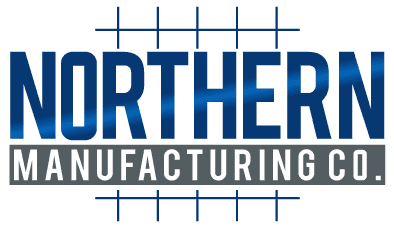Custom Stainless Steel Fabrication FAQ
Find answers to your most common stainless fabrication questions — from materials and capabilities to turnaround time.
We build non‑standard parts, weldments and assemblies exactly to your print—no catalogue items—using flat‑, tube‑ and 5‑axis laser cutting, CNC forming, certified welding and turnkey finishing under one ISO 9001 quality system.
Stainless is our core specialty—but not our only metal. Roughly 85 % of the tons we process are stainless or high‑nickel alloys; the rest are carbon‑steel or aluminum components bundled into the same PO so customers issue one RFQ, receive one inspection packet and meet one ship date. Think of us as a stainless‑focused job shop rather than stainless‑only.
Virtually any weldable metal that a laser can cut—from thin gauge sheet to 1 in plate—including stainless (austenitic, duplex, ferritic, martensitic, PH), high‑nickel alloys (Hastelloy C‑276/C‑22, Inconel 625/718, Monel 400), carbon steels (A36, A588, A514, A572) and aluminium (6061‑T6, 5052‑H32).
Because our estimating is model‑based manufacturing—we price directly from your STEP files—simple laser‑cut & bend parts are priced in 1–2 business days. Welded or machined assemblies take 5–10 business days, depending on package size.
Our primary code is AWS D1.6 (stainless). We also maintain procedures for ASME Section IX, AWS D1.1 (carbon) and AWS D1.2 (aluminum). Detailed documentation, MTRs and CWI sign‑offs are supplied when your Inspection & Test Plan (ITP) calls for them.
Tube‑laser cutting services combine high‑power CO₂ lasers with six‑axis motion to pierce holes, copes and miters in one unmanned pass—eliminating secondary drilling and holding ±0.005 in fit‑up accuracy.
Round, square and rectangular profiles from ¾ in to 10 in OD, up to 27 ft long.
Our Trumpf 5040 and 3060 cut 80 × 160 in sheets to ±0.005 in positional tolerance and ±0.002 in repeatability.
Yes—micro‑etching of text, QR codes or bend reliefs adds zero setup time or cost.
Welded shells or frames that move during welding: we weld first, let natural shrinkage occur, then 5‑axis‑cut final holes and slots so critical features hold machining‑level tolerances.
Up to 0.375 in (9.5 mm) stainless with bevel angles to 45°.
Our CNC bending & forming services use computer‑controlled press brakes with programmable tooling for repeatable bends; on‑board angle measurement eliminates trial‑and‑error.
A 660‑ton, 24‑ft Ermak press brake tackles the longest or heaviest stainless components in one hit.
Yes—manual and robotic TIG/MIG stainless welding services with code‑qualified procedures and full parameter logging.
Depending on the product:
(1) argon purge during welding to prevent oxidation;
(2) Walter Surfox™ acid‑electrolytic wands for post‑weld cleaning;
(3) spray pickling/passivation to ASTM A380/A967;
(4) mechanical grinding when the finish spec allows.
Robotic stainless welding can be cost‑effective on anything from Qty 1 prototypes to 10 000‑piece runs—offline programming slashes setup time while the robot delivers uniform heat input and high Cpk even on one‑off parts.
Pickling always involves an acid—typically nitric‑hydrofluoric—that dissolves scale and heat tint; passivation is a subsequent nitric or citric bath that rebuilds the chromium‑oxide layer. Grinding alone cannot substitute for acid pickling.
A Leica AT960 tracker and PolyWorks metrology create sub‑0.001 in point‑clouds overlaid on your CAD for instant dimensional approval.
Duplex 2205 provides roughly double the yield strength and greater chloride‑stress‑corrosion resistance, often allowing wall‑thickness reductions of 30 %.
We roll stainless and carbon cylinders from 8 in to 120 in diameter and up to 0.5 in thick—ideal for tanks, shells and ducting.
Yes—our fiber‑laser cell produces narrow, low‑distortion welds on thin‑gauge stainless and can join dissimilar metals when TIG heat input would warp the part.
Our 160 000 ft² facility in Oak Harbor, Ohio, ships stainless fabrications nationwide and internationally via certified crates or dedicated flatbeds.
Lead time depends on backlog and project size:
CNC laser‑cut & bend only: 1–2 weeks;
small fabricated projects: 4–8 weeks;
large, complex weldments: 8–16 weeks, assuming welding capacity is available.
Yes—stainless mechanical assembly services, hydro‑testing, asset tagging and direct‑to‑site delivery are all available.
We run a high‑mix, low‑volume workflow: a single prototype pump housing today, a 4 000‑piece bracket run tomorrow. Because laser, forming, welding and inspection are in‑house, change‑overs take minutes, not shifts.
Not at all. Over 70 % of our work is “family‑of‑parts” for custom systems. We read your updated models, regenerate NC code and treat each release as its own controlled lot for traceability.
Prototype & R&D Qty 1–3, typical project lots Qty 5–50, and production contracts up to 10 000 pieces with kanban or JIT call‑offs.
Carbon steel (A36, A514, A572, A588), aluminium (6061‑T6, 5052‑H32) and high‑nickel alloys such as Hastelloy C‑276/C‑22, Inconel 625/718 and Monel 400.
We stock common 304/L and 316/L sheet and 2205 duplex plate. Exotic grades are bought to order; availability can range from a few days to several weeks depending on the global market.
ASME IX and AWS PQR/WPS packages cover austenitic, duplex, ferritic, martensitic, precipitation‑hardening and high‑nickel alloys. Robotic cells log parameters for audit‑ready traceability.
With complete STEP files and BOMs, welded/fabricated quotes turn in 5–10 business days regardless of alloy mix.
